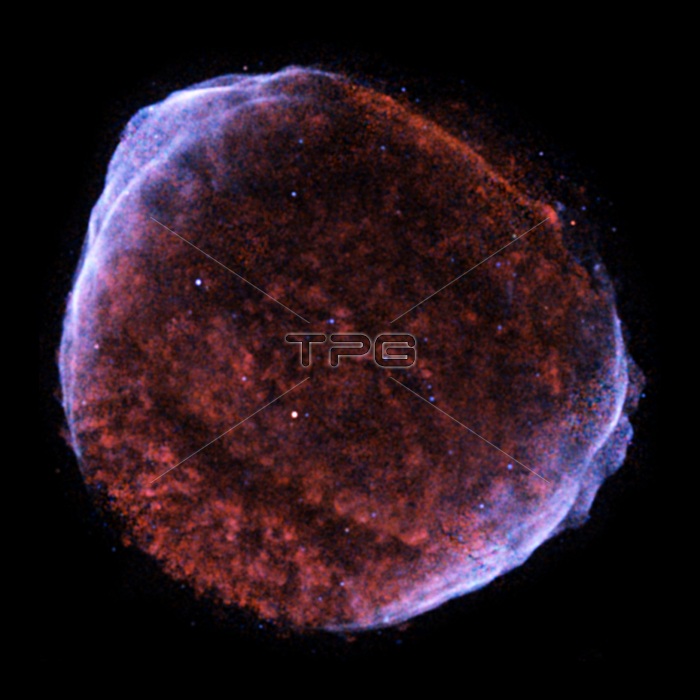
False-color Chandra image of a supernova remnant shows X-rays produced by high-energy particles (blue) and multimillion degree gas (red/green). The supernova of 1006, or SN 1006, may have been the brightest supernova on record. We now know that SN 1006 heralded not the appearance of a new star, but the cataclysmic death of an old one located about 7,000 light years from Earth. It was likely a white dwarf star that had been pulling matter off an orbiting companion star. When the white dwarf mass exceeded the stability limit, it exploded. The supernova ejected material at millions of miles per hour, generating a forward shock wave that raced ahead of the ejecta. Particles accelerated to extremely high energies by this shock wave produce the bright blue filaments seen in the upper left and lower right of the image. The fluffy red features seen throughout the interior of the remnant are from gas heated by the reverse shock. The X-ray spectrum of this gas indicates that it is enriched in oxygen and other elements synthesized by nuclear reactions during the stellar explosion. Release date April 17, 2013.
| px | px | dpi | = | cm | x | cm | = | MB |
Details
Creative#:
TOP22310122
Source:
達志影像
Authorization Type:
RM
Release Information:
須由TPG 完整授權
Model Release:
N/A
Property Release:
No
Right to Privacy:
No
Same folder images:

 Loading
Loading